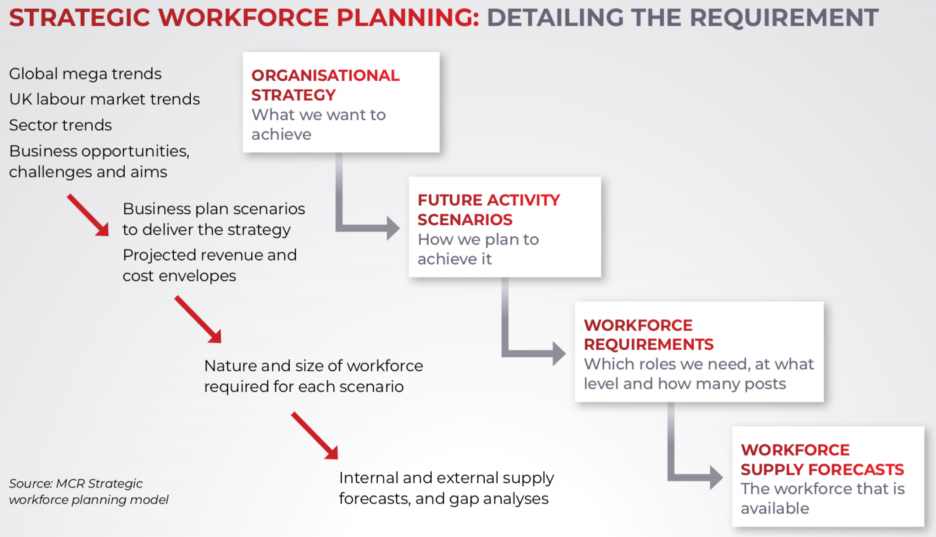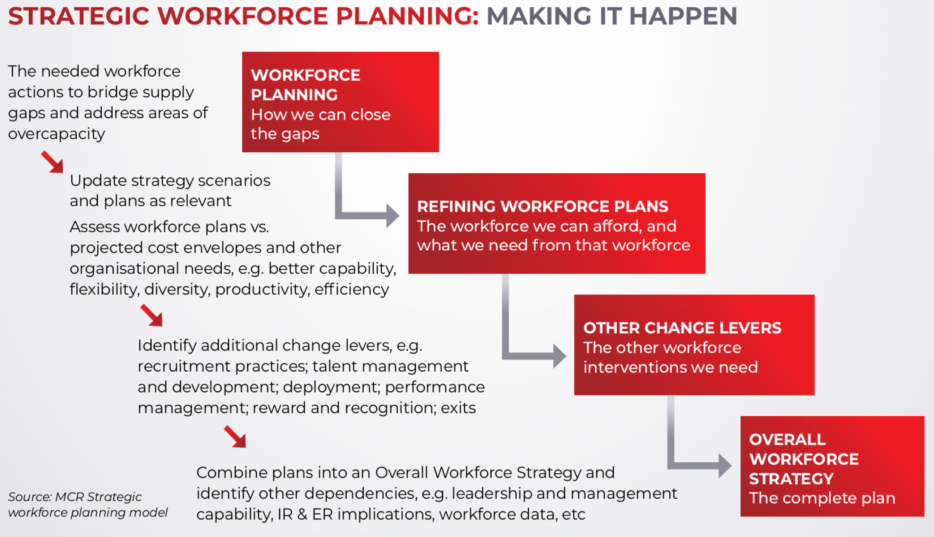Stabilise, Strengthen and Extend – The multiple dimensions of Strategic Workforce Planning in Higher Education – A ‘memo from HR to the Vice-Chancellor’
Coronavirus and its fallout. The one thing preoccupying all our minds right now. After being forced to adapt overnight to deal with the crisis, many universities across the country are facing immense pressure to survive in the current climate, say MCR’s Dean Morley and Daniel Hibbert . However, while staying afloat in these uncertain times is obviously vital, Vice Chancellors (VCs) cannot afford to have their vision and planning curtailed by the immediate priorities. There is no getting away from the longer-term challenges of competition and viability in the delivery of 21st Century higher education. This may feel particularly challenging to address in an environment with so many moving parts. In this article, we recommend deploying a simple model which we call “ Stabilise, Strengthen and Extend ”, and doing so in a way which preserves your bandwidth as a VC to think and plan beyond COVID-19.
Stabilise
Stabilising the institution is about the ‘here and now’ and about looking forward for just twelve to eighteen months. This is where you, as a VC, need to draw on the skills of your Executive Team to help the institution get through the current crisis, with individual Executives who are clearly accountable in their areas for institutional survival over the next year. With the help of your team, you need to identify the priorities on which you should focus in order for the institution to survive over the next year.
Stabilising financially will be one of the priorities due to dwindling 2020/21 admissions from international students in particular. The Institute for Fiscal Studies has predicted total long-run losses for the UK higher education sector of “anywhere between £3 billion and £19 billion, or between 7.5% and nearly half of the sector’s overall income in one year”. [1] So, as a team, we obviously need to focus on how we can mitigate or replace lost revenue, as well as improve efficiencies.
Stabilising from the human capital perspective is just as critical. There will be individuals on both the academic and ‘corporate’ sides of the institution who are highly valuable for future success. Have you identified who they are and what will motivate them, not just to stay with you but to remain focused, and firing on all cylinders? What about the critical role gaps – vacancies or capability gaps – that need to be filled? Have we got the right balance between employed academics and associate lecturers?
There is also the need to stabilise by adapting, and helping others to adapt, so that the institution can continue to carry out its function of educating in the wake of the crisis. The numerous changes COVID-19 has brought, from online lectures to feeling unsafe around others, have been an unprecedented shock to staff and students. Helping people adapt to the ‘new normal’ so that they feel comfortable in returning to their studies and working life is business critical.
Strengthen
Although COVID-19 has moved ‘stabilising’ to the top of the agenda in 2020, your overriding objective as the VC must still be to define and navigate towards the future strategy and shape that the institution will need for continuing, long-term success. So, while you harness the expertise and energy of your Executive Team to get across these choppy waters, it will be no less important that you provide the vision and facilitate the planning to succeed in the medium and long term.
Therefore, while you are stabilising the institution, you should also begin the process of strengthening it. Enabling more distributed leadership should not stop with the Executive Team, and should not be limited to steadying the ship during the current crisis. What needs to happen to build the ongoing change leadership and management capability that we need? What are the implications for this of distance learning and more remote working in the future? How can we strengthen what the institution is able to offer in teaching, research and knowledge exchange in a new world ‘without boundaries’?
Contributions to research and vaccination testing have significantly increased the public profile of universities during the pandemic. Where are the opportunities for the institution to grow its presence in public and industry discourse, and what organisational capabilities do we need to strengthen in order to achieve this?
Extend
And most importantly, as the VC, you need to extend the institution’s most vital, valuable, and marketable capabilities into the future. This means defining, and planning how to implement, the workforce capability to operationalise your Target Operating Model and deliver your future strategy. How can we adapt the features that the institution already has to its advantage, and what skills do we need to build, buy or ‘borrow’? This is of course firmly in the realm of strategic workforce planning , and the models below have been successfully deployed in the UK HE sector.


So, while the most pressing and immediate challenge you face might be about survival and to stabilise in the aftermath of COVID-19, we should also strengthen and extend to build the workforce capabilities which will enable the institution to survive and flourish in the long term. There is no substitute for ‘visioning the future’ and setting out a clear roadmap of what needs to happen and how that will be implemented. As a VC, you will do well to engage closely with your HR leadership over the coming months on the future Target Operating Model and Workforce Plan.
__________________________________
[1] Dreyton, E. & Waltmann, B. (2020). Will Universities need a bailout to survive the COVID-19 crisis? Institute for Fiscal Studies: https://www.ifs.org.uk/publications/14919
This article was originally published as part of UHR’s SummerWise programme of learning resources: https://lnkd.in/dCQtRtQ
For further information: dean.morley@mcr.consulting or daniel.hibbert@mcr.consulting










